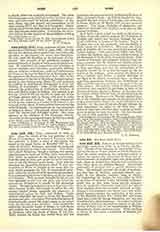

John XVIII (XIX), POPE, successor of John XVII, consecrated Christmas, 1003; d. June, 1009. He was the son of a Roman priest named Leo, and, before his elevation to the papacy, his name was Phasianus. He, too, owed his elevation to the influence of Crescentius. The accounts of his pontificate consist almost exclusively of details of ecclesiastical administration. He confirmed the possessions and privileges of several churches and convents; sanctioned different gifts to religious institutions; conferred ecclesiastical privileges on the reestablished See of Merseburg; gave his consent at the Roman Synod of June, 1007, to the establishment of the See of Bamberg, founded and endowed by the German king, Henry II; and conferred the pallium on Archbishops Meingaudus of Trier and Elphege of Canterbury. John XVIII energetically opposed the pretensions of Archbishop Letericus of Sens and Bishop Fulco of Orleans, who refused to allow the Abbot of Fleury, Goslin, to make use of the privileges granted him by Rome, and tried to make him burn the papal charters. The pope complained of this to the emperor, and called both bishops to his tribunal under threat of ecclesiastical censures for the entire kingdom. In Constantinople he was recognized as Bishop of Rome. His epitaph relates that he subdued the Greeks and dislodged schism. His name appears on the diptychs of the Byzantine Church. According to one catalogue of popes, he died as a monk at St. Paul’s near Rome in June, 1009.
J. P. KIRSCH

